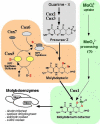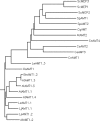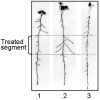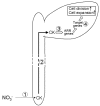Molecular and developmental biology of inorganic nitrogen nutrition
- PMID: 22303192
- PMCID: PMC3243300
- DOI: 10.1199/tab.0011
Molecular and developmental biology of inorganic nitrogen nutrition
Figures












References
-
- Alvarez-Buylla E. R., Liljegren S. J., Pelaz S., Gold S. E., Burgeff C., Ditta G. S., Vergara-Silva F., Yanofsky M. F. MADS-box gene evolution beyond flowers: expression in pollen, endosperm, guard cells, roots and trichomes. Plant J. 2000;241(1):457–466. - PubMed
-
- Amtmann A., Sanders D. Mechanisms of Na+ uptake by plant cells. Adv. Botan. Res. 1999;291(1):75–112.
LinkOut - more resources
Full Text Sources
